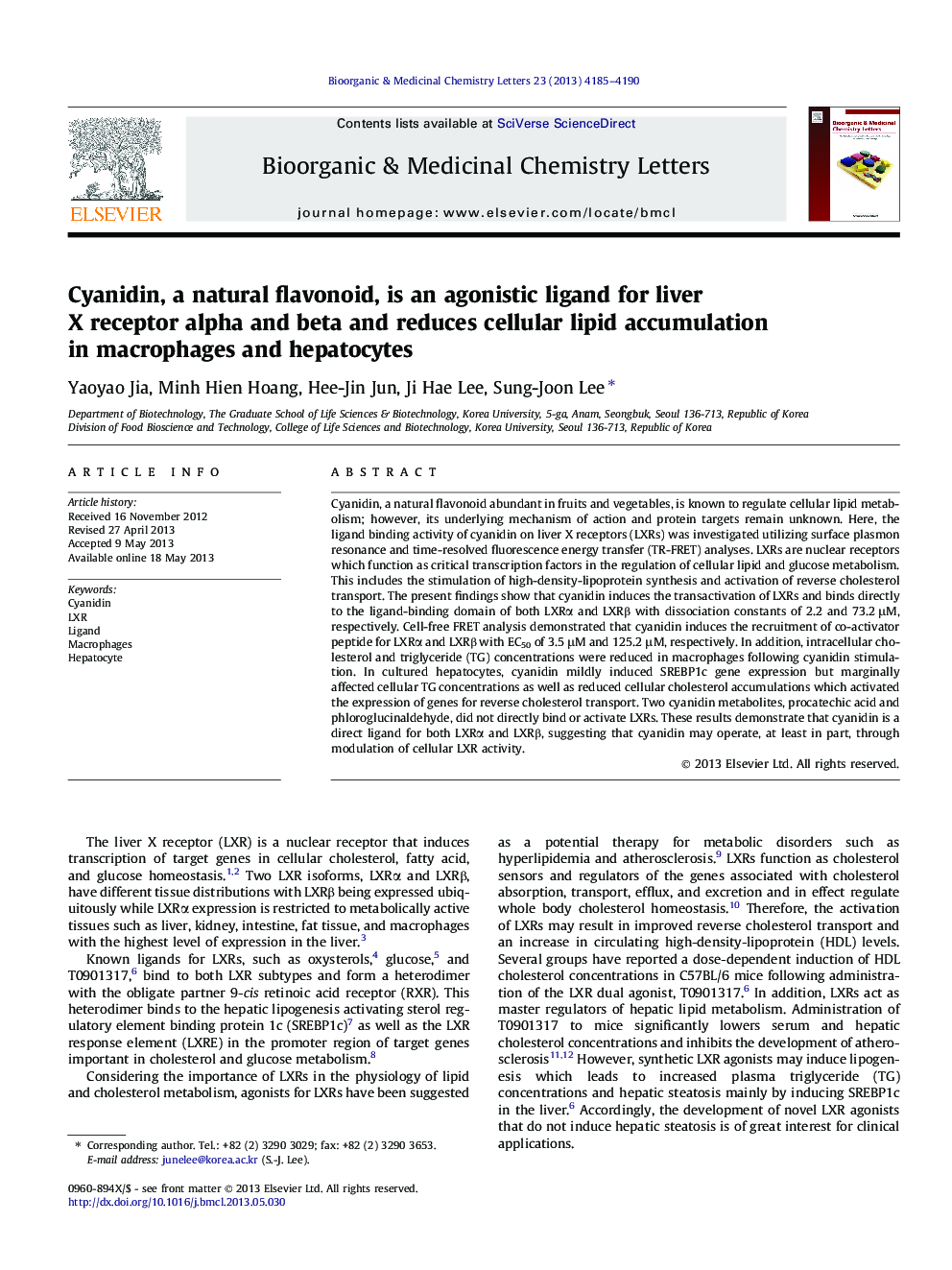| کد مقاله | کد نشریه | سال انتشار | مقاله انگلیسی | نسخه تمام متن |
|---|---|---|---|---|
| 10591506 | 981754 | 2013 | 6 صفحه PDF | دانلود رایگان |
عنوان انگلیسی مقاله ISI
Cyanidin, a natural flavonoid, is an agonistic ligand for liver X receptor alpha and beta and reduces cellular lipid accumulation in macrophages and hepatocytes
دانلود مقاله + سفارش ترجمه
دانلود مقاله ISI انگلیسی
رایگان برای ایرانیان
کلمات کلیدی
EC50TR-FRETRXRLXRRetinoid X receptorLBDPGAPCA - PCASurface plasmon resonance - تشدید پلاسمون سطحیSPR - تشدید پلاسمون سطحیequilibrium dissociation constant - تعادل تعادل ثابتligand-binding domain - دامنه اتصال لیگاندCyanidin - سایانیدینligand - لیگاندMacrophages - ماکروفاژها،درشت خوارهاHepatocyte - هپاتوسیتliver X receptor - کبد X گیرنده
موضوعات مرتبط
مهندسی و علوم پایه
شیمی
شیمی آلی
پیش نمایش صفحه اول مقاله

چکیده انگلیسی
Cyanidin, a natural flavonoid abundant in fruits and vegetables, is known to regulate cellular lipid metabolism; however, its underlying mechanism of action and protein targets remain unknown. Here, the ligand binding activity of cyanidin on liver X receptors (LXRs) was investigated utilizing surface plasmon resonance and time-resolved fluorescence energy transfer (TR-FRET) analyses. LXRs are nuclear receptors which function as critical transcription factors in the regulation of cellular lipid and glucose metabolism. This includes the stimulation of high-density-lipoprotein synthesis and activation of reverse cholesterol transport. The present findings show that cyanidin induces the transactivation of LXRs and binds directly to the ligand-binding domain of both LXRα and LXRβ with dissociation constants of 2.2 and 73.2 μM, respectively. Cell-free FRET analysis demonstrated that cyanidin induces the recruitment of co-activator peptide for LXRα and LXRβ with EC50 of 3.5 μM and 125.2 μM, respectively. In addition, intracellular cholesterol and triglyceride (TG) concentrations were reduced in macrophages following cyanidin stimulation. In cultured hepatocytes, cyanidin mildly induced SREBP1c gene expression but marginally affected cellular TG concentrations as well as reduced cellular cholesterol accumulations which activated the expression of genes for reverse cholesterol transport. Two cyanidin metabolites, procatechic acid and phloroglucinaldehyde, did not directly bind or activate LXRs. These results demonstrate that cyanidin is a direct ligand for both LXRα and LXRβ, suggesting that cyanidin may operate, at least in part, through modulation of cellular LXR activity.
ناشر
Database: Elsevier - ScienceDirect (ساینس دایرکت)
Journal: Bioorganic & Medicinal Chemistry Letters - Volume 23, Issue 14, 15 July 2013, Pages 4185-4190
Journal: Bioorganic & Medicinal Chemistry Letters - Volume 23, Issue 14, 15 July 2013, Pages 4185-4190
نویسندگان
Yaoyao Jia, Minh Hien Hoang, Hee-Jin Jun, Ji Hae Lee, Sung-Joon Lee,